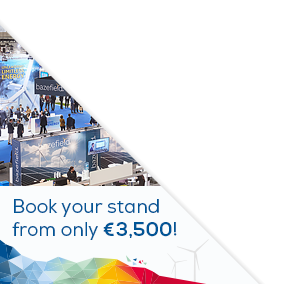Presentations
Siblings:
SpeakersPostersPresenters’ dashboardProgramme committee
Wakes and the Atmosphere: Are We Reaching the Limits of Modelling?
Christopher Rodaway, Lead Scientist Advanced Numerics, RWE
Session
Abstract
The interaction between wind farms and the surrounding atmosphere is extremely complex and brings significant challenges when it comes to site atmospheric characterisation and turbine interaction (wakes & blockage) modelling. This can be seen in recent publications covering the global blockage effect [1] and gravity waves [2]. Furthermore, the scale of offshore wind farm development is ever increasing, thereby increasing the risk associated with accurate energy yield predictions. Significant progress has been made in the high-fidelity modelling space using Computational Fluid Dynamics (CFD), with novel approaches emerging to cover the increasing modelling scales of offshore wind farm developments [3][4], however as ever the modelling is only as good as the inputs and assumptions. In order to address this risk, RWE embarked on a collaborative project with DNV to explore the near- and far-field / big cluster wake effects across two RWE offshore wind farms in the North Sea, Amrumbank West (DE) and Triton Knoll (UK). Modelling was conducted using a range of high-fidelity (DNV RANS CFD, RWE RANS CFD & WRF-WFP) and low-fidelity models (DNV Eddy Viscosity inc. LWFC & RWE’s VV) models. This resulted in the joint RWE/DNV publication of a whitepaper [5] that summarised the findings of the modelling efforts and comparisons against operational data from both wind farms. In both cases, the models that compared best to operational data were the high-fidelity RANS CFD models that also showed the largest neighbouring wind farm effect. However, in the case of Triton Knoll, significant challenges emerged pertaining the coastal effect and specifically the atmospheric coastal transition. Consequently, RWE’s RANS CFD predictive power showed shortcomings resulting from the atmospheric assumptions and boundary condition specification. This has raised big questions about exactly what boundary conditions, and therefore site characterisation, should be used in order to derive representative turbine interaction effects. Crucially, RWE assumed a state of hydrostatic balance for Triton Knoll, which through further investigation we now know does not exist at this location due to the coastal transition. Since the publication of the whitepaper, RWE has undertaken some additional development of their CFD process to include the residual effect of the onshore diurnal atmospheric effect (initiated from WRF) within a method that captures the coastal transition. This approach has significantly improved the comparisons against operational data at Triton Knoll. DNV, on the other hand, processed WRF directly to inform boundary conditions, thereby relying on a mesoscale model to capture the coastal transition effects. This approach also compared very well to operational data. Delegates will learn about these different methods, how they compare, and what the risks are of each. They will also discover how we may have reached a point where the industry’s modelling capabilities have out-paced its measurement capabilities with respect to potential temperature profiling, and how offshore wind is exposed to this risk. However, they will also be presented with a potential solution to addressing this risk and how we can increase confidence in site-specific conditions if we need to rely on mesoscale models going forward.








